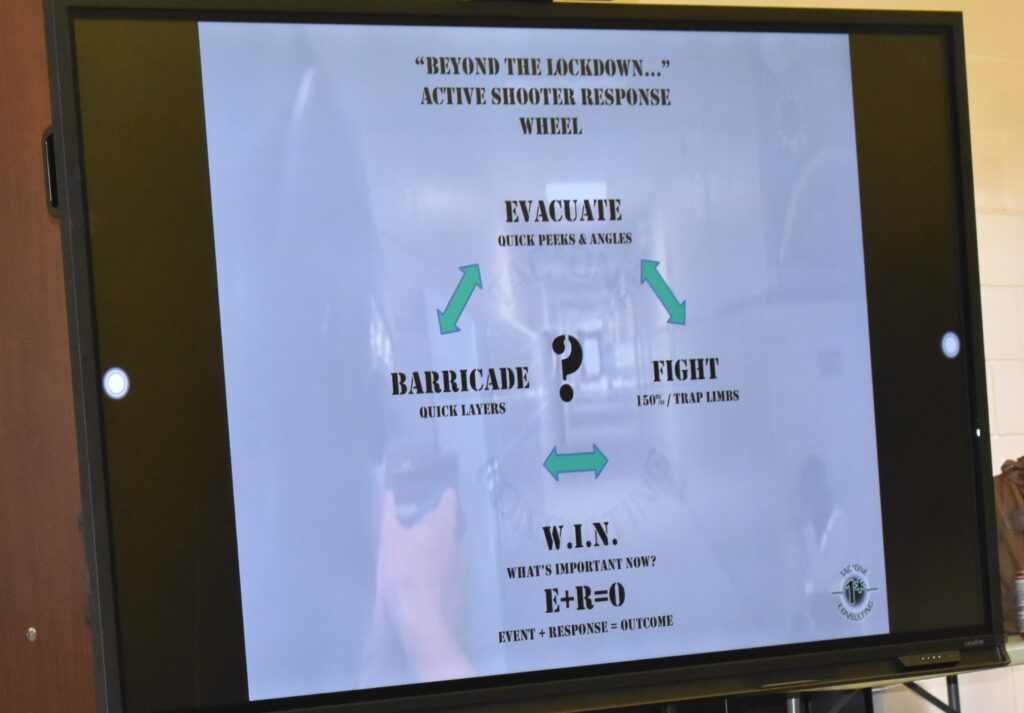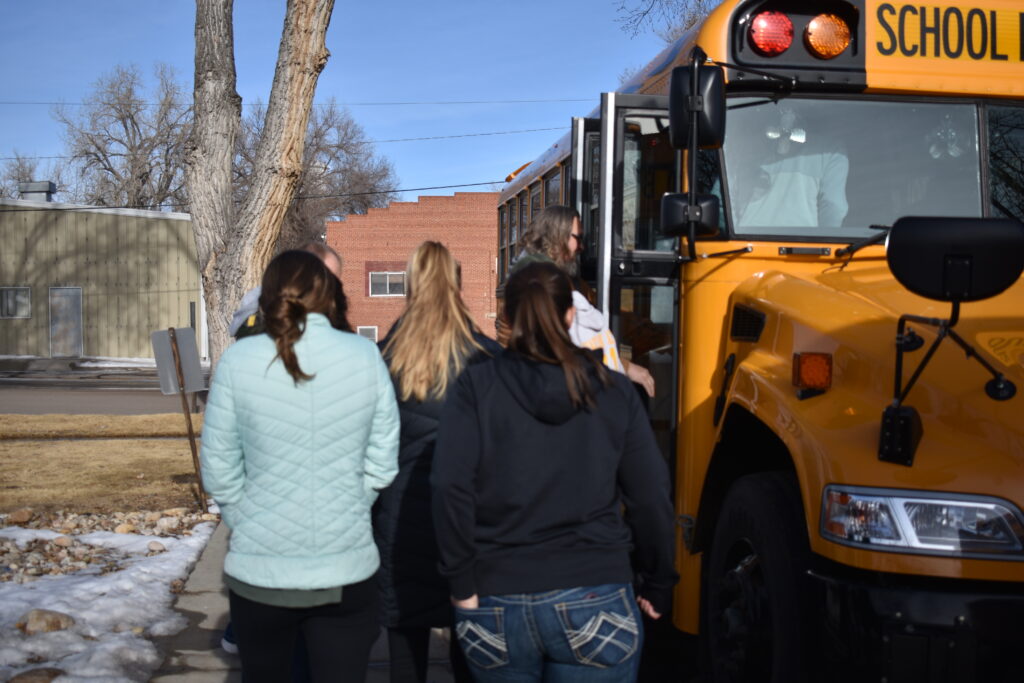Breaking News
SCSD#3 Staff Practices for Active Shooter Scenario

In the second day of the TAC*ONE training at SCSD#3 in Clearmont, the teachers and staff participated in several scenarios that could possibly happen during an active shooter occurrence.
Before the drills, TAC*ONE instructors Joe Deedon and Rich Krantz showed some videos and news clips showing the responses of people who had been involved in situations, such as Uvalde, and other shootings.

Deedon talked to the staff about what went right and what went wrong in some of the shootings. They showed a news clip and talked about James Shaw, the man who stopped the Waffle House shooting in Tennessee. Shaw was an electrician with no combat training, but he tackled the gunman, wrestled the gun away, and shoved him out the door, undoubtedly saving several lives.
Deedon talked about Shaw’s mindset.
Another part of the training was basic first aid, learning how to correctly use a tourniquet on legs and arms, and to practice triage, knowing which injury requires immediate attention. Deedon also recommended keeping a simple tourniquet in a vehicle, as it could be used in many different settings.

The training received positive comments from the Arvada-Clearmont staff. Gerry Chase, K-12 music teacher thought the TAC*ONE training was a good thing.
Adam Georgeson, 7-12 special ed teacher who has been teaching at Clearmont since March of 2022, said he had a unique perspective on the training.
Georgeson added that having been through a school shooting at one time, when they practiced the lock downs, he felt he was more vigilant and aware because he knew of the possible outcomes.

One scenario that the staff set up was as if they were in the gym for a pep rally or a basketball game when the ‘shooter’ came in. The staff did well in leaving the gym in a hurried yet orderly manner and found the safe rooms to get away from the shooter. Deedon said that one should use all their senses, sight, hearing, and even smell to know where the shooter might be.
One problem mentioned was that in the school it was sometimes difficult to tell exactly where the shooter was, and where the shots were coming from.
A new addition this year was the bus drivers training, and how they would react should someone try to get into the school bus with a firearm.
He asked how the district communicates with the school, and the bus drivers and school communicate with CB Radios, as cell service is sometimes spotty on the Wyoming roads.

Deedon related an incident that a co-worker had been involved in at a middle school.
He added that no one communicated with the bus driver, and that the bus should have kept going. The kids couldn’t go into the school, and the safest option would have been to leave the campus and drive somewhere to be safe.
In the drill the bus drivers were coached on what to do should a man waving a gun tries to board the bus. The first thing the driver should do, Rich Krantz said, was to make sure the gun is not pointed at you, sweep it away from you. Then, since there is nowhere to run, you have to fight, and do what you have to in protecting the students.
After the bus scenario, the teachers returned to the school for a brief recap of the day’s events.

